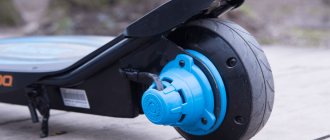Aluminum rivets are a common material for fastening various types of elements and workpieces. This popularity is explained by the fact that not all materials can be welded. The main advantage of fastening with rivets is the ability to withstand vibration and mechanical loads. Which aluminum rivets should I choose? You will find out the answer from this article.
Features of aluminum rivets
Aluminum rivets GOST are a type of fastening used to create inextricable connections. Before starting riveting, you need to make sure that this type of hardware is suitable for the parts being connected. Rivets are smooth cylinder-shaped rods with a factory head at the end. To connect 2 or more elements, the hardware is placed in a hole whose diameter is slightly larger than the diameter of the hardware itself.
After installation, the rear end of the rivet is flattened using a hammer or a special riveting device. Thus, the rod increases to a thickness of 1.5 times the original and a second head is formed.
The scope of application of this type of material is quite wide. These are industries such as:
- aircraft manufacturing;
- shipbuilding;
- cosmetic and food industry;
- chemical production.
Due to the low strength of aluminum rivets, it is permissible to use them only in connections that are not subject to strong and prolonged loads.
As can be seen in the photo of aluminum rivets, the plasticity of the metal allows you to not use complex tools when working with them.
Main types of aluminum alloys for making rivets
| View | Brand | Standard designation | Symbol of the brand (group) |
| Aluminum alloys | AMg5P | GOST 14838-78 | 31 |
| D18 | GOST 4784-74 | 36 | |
| AD1, A5E | 37 |
Designation example: Aluminum rivet 4x20.37 GOST 10299-80: 4 - diameter in mm; 20 — length in mm; 37 - alloy grade AD1.
Aluminum rivets are packed in polypropylene bags of 10, 15, 20, 25, 30 kg. We provide packaging services in 500, 1000, 5000 grams. At the customer's request, additional conservation and monitoring of the mechanical properties and quality of coatings is possible - in accordance with GOST 9.302-79.
Positive and negative aspects of use
Advantages of aluminum rivets:
- resistance to corrosion damage;
- connection reliability;
- resistance to natural precipitation;
- safety from an environmental point of view;
- low weight;
- financial inclusion;
- plastic;
- fastening speed.
Minuses:
- lower strength;
- cannot be used to connect titanium and steel products.
Types of rivets
Today there are such types of aluminum rivets as:
Under the hammer. This is the simplest way to attach two elements. To connect two workpieces, holes are made in them into which a rivet is inserted. Then, using a hammer, the fasteners are flattened.
Piston. They look like a small tube, without caps. Disadvantages: lower strength, poor resistance to impact loads, need for two-way access. Used to join plastic, leather, etc.
Mortgages. They are piston-type fasteners with a pre-inserted punch. When installed, the rod is flattened, creating 1 head. The downside is that it requires significant effort to be applied to the punch.
Threaded. They are used when connecting thin-walled materials in situations where cutting threads is not possible.
Exhaust. Thin parts, as well as parts with increased fragility, are fastened with blind rivets. Hardware of this type looks like a punch and sleeve. A separate tool is required for installation. Can be closed or open. There are also exhaust fasteners with high-strength heads - they are able to withstand fairly large tensile loads and displacement.
Rivet sizes
The following points influence the choice of size of aluminum rivets:
- load type;
- type and parameters of connected parts;
- rivet location.
Hardware with a countersunk head is used in situations that require an aerodynamic smoothness of the surface. In other cases, universal rivets are usually used.
The size of the rivet element should be 3 times the thickness of the thickest part to be fastened. Rivets whose diameter is less than 2.5 mm are used only for connections that do not bear load.
The best bits for a screwdriver - manufacturer ratings, classification and selection featuresWhich polyurethane foam is better: tips on how to choose, review of characteristics, properties and features of modern foams
Choosing a blade for a hacksaw for metal: rating the best blades, choosing and using the best tool
Another option for calculating the dimensions of the rivets is to multiply the thickness of the sheets by 3 and buy the next fasteners in diameter.
The choice of aluminum rivets should be based on the characteristics of the planned connection. We should also not forget that certain types of fasteners require the use of special installation tools and devices. In addition, you should pay attention to the manufacturer. It is better to choose hardware from well-known brands. Large companies value their reputation and will not skimp on the quality of raw materials.
Rivet GOST 10300
Rivets with countersunk head GOST 10300-80
Countersunk head rivets of accuracy class B and C with a shaft diameter of 1-36 mm. and length 2-180 mm. are produced in accordance with GOST 10300-80.
They are used in mechanical engineering to fasten various parts together.
For the manufacture of steel rivets, carbon wire is used in accordance with GOST 17305.
Rivet drawing:
Rivets with countersunk head GOST 10300-80
The dimensions of the rivets are given in tables 1 and 2:
Table 1, mm
| Rod diameter d | 1 | 1,2 | (1,4) | 1,6 | 2 | 2,5 | 3 | 4 | 5 |
| Head diameter D | 1,9 | 2,3 | 2,7 | 2,9 | 3,9 | 4,5 | 5,2 | 7,0 | 8,8 |
| Head height H | 0,5 | 0,6 | 0,7 | 0,7 | 1,0 | 1,1 | 1,2 | 1,6 | 2,0 |
| Angle a | 90° | ||||||||
| Radius under the head, r, no more | 0,1 | 0,2 | |||||||
| Distance from the base of the head to the place where the diameter is measured l | 1,5 | 3 | 4 | ||||||
Continuation of Table 1, mm.
| Rod diameter d | 6 | 8 | 10 | 12 | (14) | 16 | 20 | 24 | 30 | 36 |
| Head diameter D | 10,3 | 13,9 | 17 | 20 | 24 | 30 | 36 | 41 | 49 | |
| Head height H | 2,4 | 3,2 | 4,8 | 5,6 | 6,8 | 7,2 | 9 | 11 | 14 | 16 |
| Angle a | 90° | 75° | 60° | 45° | ||||||
| Radius under the head, r, no more | 0,25 | 0,3 | 0,4 | 0,5 | 0,6 | 0,8 | ||||
| Distance from the base of the head to the place where the diameter is measured l | 4 | 6 | 8 | 10 | ||||||
Note. It is not recommended to use rivets with the dimensions indicated in brackets.
Table 2, mm
| Rod diameter d | Length L | Rod diameter d | Length L |
| 1,0 | 2-8 | 8 | 9-60 |
| 1,2 | 3-10 | 10 | 16-75 |
| (1,4) | 3-12 | 12 | 18-85 |
| 1,6 | 3-12 | (14) | 22-100 |
| 2,0 | 3-16 | 16 | 24-100 |
| 2,5 | 4-20 | 20 | 38-150 |
| 3,0 | 4-40 | 24 | 40-180 |
| 4,0 | 5-50 | 30 | 52-180 |
| 5,0 | 8-60 | 36 | 60-180 |
| 6,0 | 8-60 |
Theoretical weight of steel rivets:
| Theoretical weight 1000 pcs. rivets, kg, with nominal rod diameter d, mm | |||||||||||||||||||
| Length L, mm | 1 | 1,2 | (1,4) | 1,6 | 2 | 2,5 | 3 | 4 | 5 | 6 | 8 | 10 | 12 | (14) | 16 | 20 | 24 | 30 | 36 |
| 2 | 0,016 | ||||||||||||||||||
| 3 | 0,022 | 0,033 | 0,055 | 0,058 | 0,104 | ||||||||||||||
| 4 | 0,028 | 0,042 | 0,067 | 0,074 | 0,129 | 0,195 | 0,281 | ||||||||||||
| 5 | 0,034 | 0,051 | 0,079 | 0,090 | 0,154 | 0,233 | 0,336 | 0,635 | |||||||||||
| 6 | 0,040 | 0,060 | 0,091 | 0,106 | 0,178 | 0,272 | 0,392 | 0,733 | |||||||||||
| 7 | 0,047 | 0,069 | 0,103 | 0,121 | 0,203 | 0,310 | 0,447 | 0,832 | |||||||||||
| 8 | 0,053 | 0,078 | 0,115 | 0,137 | 0,228 | 0,349 | 0,503 | 0,931 | 1,522 | 2,235 | 4,294 | ||||||||
| 9 | 0,087 | 0,127 | 0,153 | 0,252 | 0,387 | 0,558 | 1,029 | 1,677 | 2,457 | 4,689 | |||||||||
| 10 | 0,095 | 0,140 | 0,169 | 0,277 | 0,426 | 0,614 | 1,128 | 1,831 | 2,679 | 5,083 | |||||||||
| 12 | 0,164 | 0,200 | 0,326 | 0,503 | 0,724 | 1,325 | 2,139 | 3,123 | 5,478 | ||||||||||
| 14 | 0,376 | 0,580 | 0,835 | 1,522 | 2,447 | 3,563 | 6,656 | ||||||||||||
| 16 | 0,425 | 0,657 | 0,946 | 1,719 | 2,755 | 4,007 | 7,445 | 13,41 | |||||||||||
| 18 | 0,734 | 1,057 | 1,917 | 3,064 | 4,451 | 8,234 | 14,64 | 19,93 | |||||||||||
| 20 | 0,811 | 1,168 | 2,114 | 3,372 | 4,895 | 9,023 | 15,88 | 21,70 | |||||||||||
| 22 | 1,279 | 2,311 | 3,680 | 5,309 | 9,812 | 17,11 | 23,48 | 33,67 | |||||||||||
| 24 | 1,390 | 2,509 | 3,989 | 5,783 | 10,603 | 18,34 | 25,26 | 36,09 | 44,36 | ||||||||||
| 26 | 1,501 | 2,706 | 4,297 | 6,227 | 11,391 | 19,58 | 27,03 | 38,51 | 47,52 | ||||||||||
| 28 | 1,612 | 2,903 | 4,605 | 6,671 | 12,180 | 20,81 | 28,81 | 40,93 | 50,68 | ||||||||||
| 30 | 1,723 | 3,100 | 4,913 | 7,115 | 12,969 | 22,04 | 30,58 | 43,34 | 53,83 | ||||||||||
| 32 | 1,834 | 3,294 | 5,222 | 7,559 | 13,758 | 23,28 | 32,36 | 45,76 | 56,99 | ||||||||||
| 34 | 1,945 | 3,495 | 5,530 | 8,002 | 14,547 | 24,51 | 34,13 | 48,18 | 60,15 | ||||||||||
| 36 | 2,056 | 3,692 | 5,838 | 8,446 | 15,337 | 25,74 | 35,91 | 50,59 | 63,30 | ||||||||||
| 38 | 2,167 | 3,890 | 6,146 | 8,890 | 16,126 | 26,97 | 37,68 | 53,01 | 66,46 | 106,4 | |||||||||
| 40 | 2,278 | 4,087 | 6,455 | 9,334 | 16,915 | 28,21 | 39,46 | 55,43 | 69,62 | 111,4 | 164,4 | ||||||||
| 42 | 4,284 | 6,763 | 9,778 | 17,704 | 29,44 | 41,24 | 57,84 | 72,77 | 116,3 | 171,5 | |||||||||
| 45 | 4,580 | 7,225 | 10,444 | 18,888 | 31,29 | 43,90 | 61,47 | 77,51 | 123,7 | 182,2 | |||||||||
| 48 | 4,876 | 7,688 | 11,110 | 20,072 | 33,14 | 46,56 | 65,09 | 82,24 | 131,1 | 192,8 | |||||||||
| 50 | 5,073 | 7,996 | 11,554 | 20,861 | 34,37 | 48,34 | 67,51 | 85,40 | 136,0 | 199,9 | |||||||||
| 52 | 8,304 | 11,998 | 21,650 | 35,61 | 50,11 | 69,93 | 88,56 | 140,9 | 207,0 | 319,8 | |||||||||
| 55 | 8,767 | 12,663 | 22,834 | 37,46 | 52,78 | 73,55 | 93,29 | 148,3 | 217,7 | 336,4 | |||||||||
| 58 | 9,229 | 13,329 | 24,017 | 39,31 | 55,44 | 77,18 | 98,03 | 155,7 | 228,3 | 353,0 | |||||||||
| 60 | 9,537 | 13,773 | 24,806 | 40,54 | 57,22 | 79,60 | 101,18 | 160,7 | 235,4 | 364,1 | 529,9 | ||||||||
| 65 | 43,62 | 61,66 | 85,64 | 109,07 | 173,0 | 253,2 | 391,9 | 569,9 | |||||||||||
| 70 | 46,70 | 66,09 | 91,68 | 116,97 | 185,3 | 270,9 | 419,6 | 609,8 | |||||||||||
| 75 | 49,79 | 70,53 | 97,72 | 124,85 | 197,7 | 288,7 | 447,4 | 649,8 | |||||||||||
| 80 | 74,97 | 103,80 | 132,75 | 210,0 | 306,5 | 475,1 | 689,7 | ||||||||||||
| 85 | 79,41 | 109,80 | 140,64 | 222,3 | 324,2 | 502,9 | 729,7 | ||||||||||||
| 90 | 115,80 | 148,53 | 234,7 | 341,9 | 530,6 | 769,9 | |||||||||||||
| 95 | 121,90 | 156,42 | 247,0 | 359,6 | 558,4 | 809,6 | |||||||||||||
| 100 | 127,90 | 164,32 | 259,3 | 377,5 | 586,1 | 849,5 | |||||||||||||
| 110 | 284,0 | 413,0 | 641,6 | 929,4 | |||||||||||||||
| 120 | 308,6 | 448,5 | 697,1 | 1009,3 | |||||||||||||||
| 130 | 333,3 | 484,0 | 752,6 | 1089,2 | |||||||||||||||
| 140 | 358,0 | 519,5 | 808,0 | 1179,1 | |||||||||||||||
| 150 | 382,6 | 555,0 | 863,5 | 1249,0 | |||||||||||||||
| 160 | 590,6 | 919,0 | 1328,9 | ||||||||||||||||
| 170 | 626,1 | 974,5 | 1408,8 | ||||||||||||||||
| 180 | 661,6 | 1030,0 | 1488,8 | ||||||||||||||||
Example of conditional marking:
Rivet 4x40.00 GOST 10300-80: rivet with a countersunk head of accuracy class B, diameter d = 4 mm, length L = 40 mm, uncoated.
Rivets are made not only from steel, but also from aluminum, bronze, copper, brass and other materials.
fasteners, fasteners











